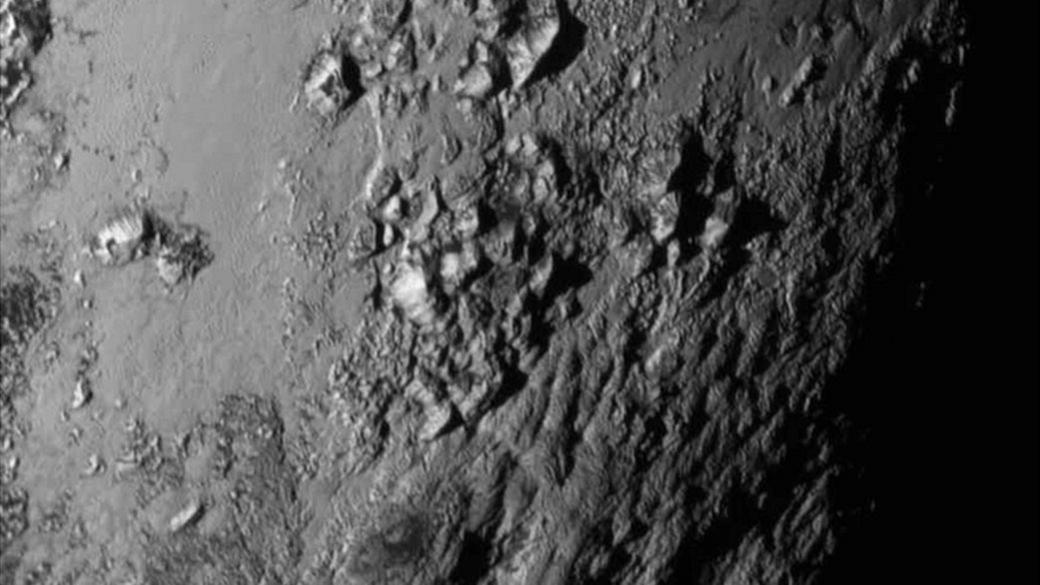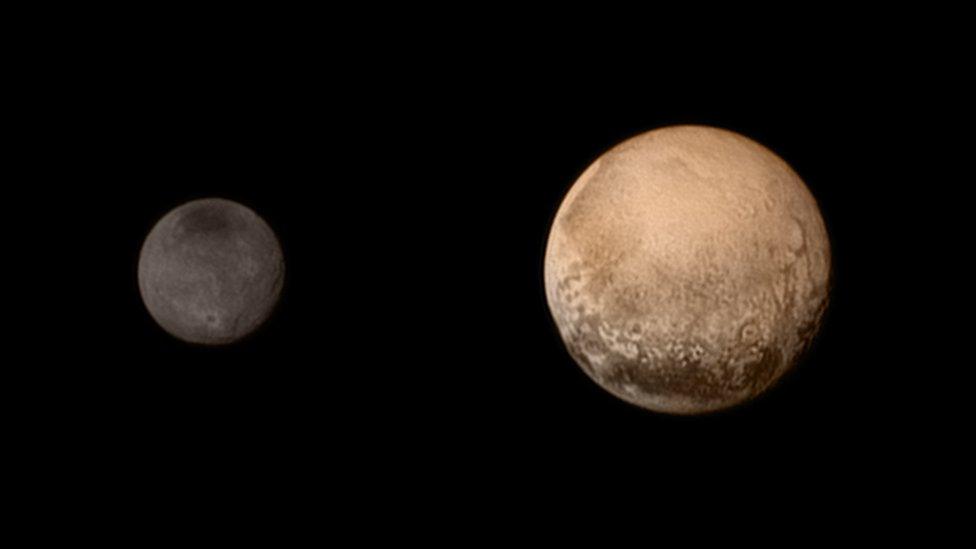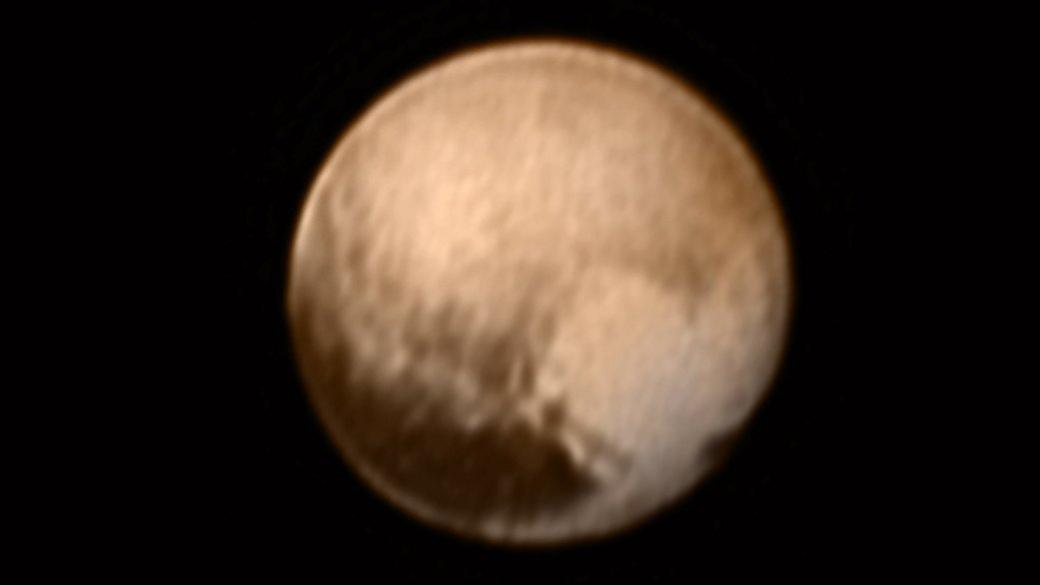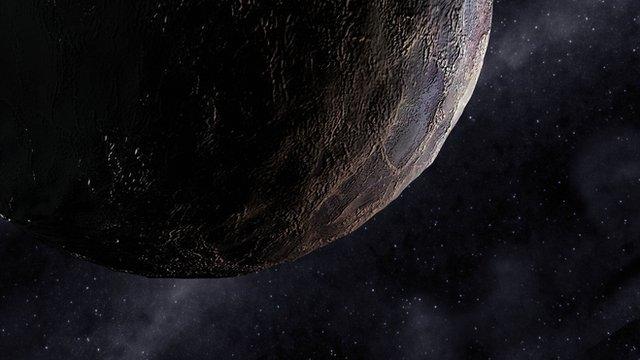Pictures: Take a trip through our Solar System
- Published

Computer artwork of the planets from left to right; Mercury, Venus, Earth, Mars, Jupiter, Saturn, Uranus and the dwarf planet Pluto
Nasa's New Horizons space probe is sending back the most detailed images of Pluto ever seen.
See NASA's latest pictures of Pluto
For more than 70 years, it was one of nine planets recognised in our Solar System, but it is now classed as a dwarf planet.
Take a journey through the planets and Pluto, with these images captured by the spacecrafts sent out to explore.

An enhanced image of Mercury shows the differences between the rock on the surface.

The surface of Venus is shown in a computer-generated picture based on images from the Magellan orbiter in the 1990s, with colours added using information from the Soviet Venera 13 and 14 landers.

The Earth, as seen by the crew of Apollo 11 in July 1969.

A colour-enhanced fish-eye view of Mars, made from a mosaic of images taken by a Viking orbiter

Jupiter, the largest of the planets, was captured by Hubble's Wide Field Camera Three.

Combined images taken by the Cassini spacecraft in May 2004 shows a wide view of Saturn.

Nasa's Voyager 2 spacecraft flew past Uranus, the seventh planet from the Sun, in January 1986.

Neptune, as seen from Voyager 2's camera. The picture was taken at a range of 4.4 million miles and shows the Great Dark Spot and its bright smudge.

The most detailed view of Pluto yet seen has been taken by the New Horizons spacecraft. The latest data has provided more information on the size of Pluto. It is a little bigger than expected, about 80km wider than previous predictions, making it around two-thirds the size of our moon.
- Published16 July 2015

- Published15 July 2015

- Published14 July 2015

- Published9 July 2015

- Published3 October 2014

